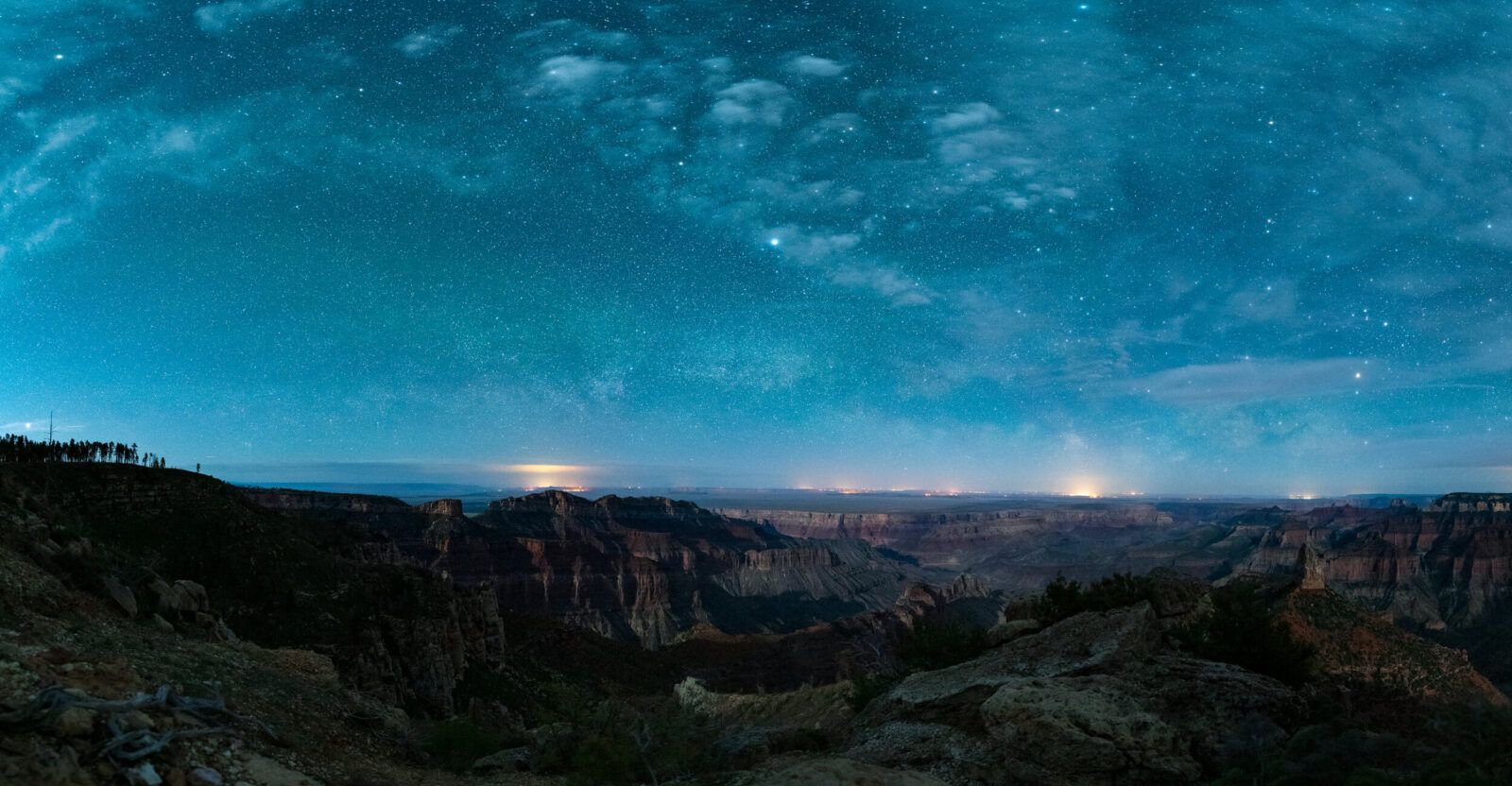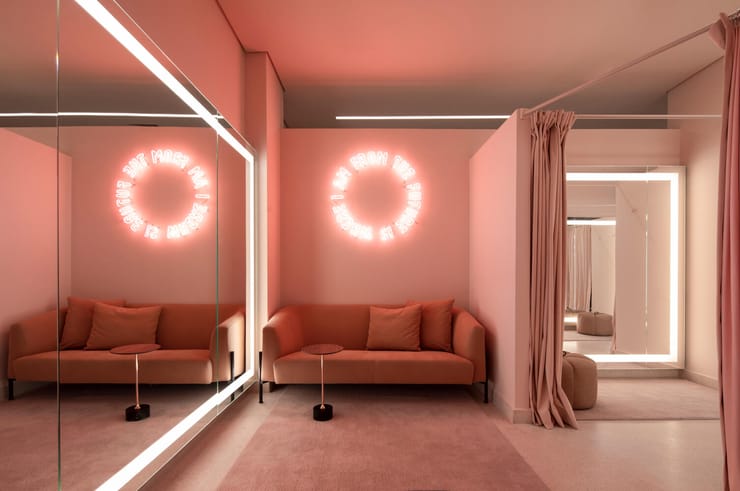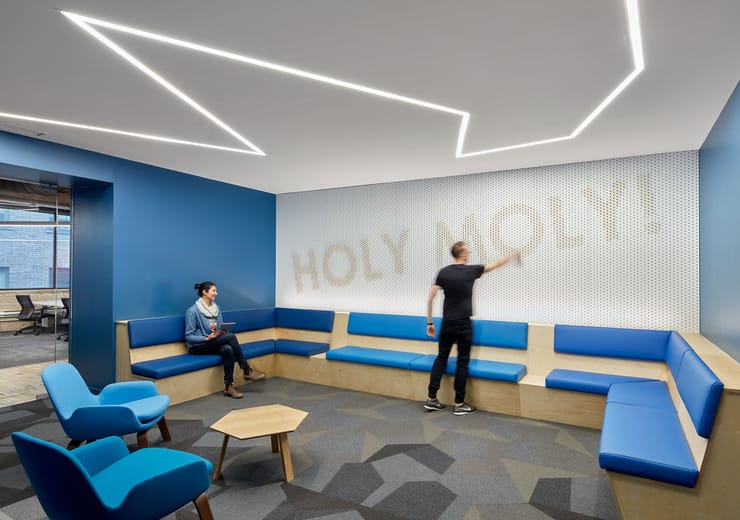Last updated on October 17, 2024 10:02 am
Most of us have experienced the effects of light pollution. Go outside at night in an urban area and it’s difficult to see the stars due to excessive or ineffective outdoor lighting. The overuse of lighting power and operation time creates unnecessary energy costs and environmental impact. What you may not know is that light pollution has significant negative consequences on people and wildlife. However, advances have helped keep the night sky dark and minimize ecological disruption while meeting the nighttime lighting needs for safety and security. This piece addresses the consequences of light pollution and the development of outdoor lighting solutions in alignment with natural systems.

Table of contents
- Introduction to light pollution
- The effects of light pollution on people
- The effects of light pollution on wildlife
- History and precedents of the dark sky movement
- Regulations for dark sky compliance
- Nighttime lighting needs for safety and security
- Lighting design practices for dark skies
- Protecting our cosmic connection

Introduction to light pollution
Light pollution has direct impacts on humans as well as natural habitats. Most light pollution occurs when excessive outdoor lighting refracts upwards through the atmosphere, illuminating the sky itself. Major light pollution, known as skyglow, can travel over 200 miles, affecting surrounding regions.[1] Skyglow is not only caused by upward-facing luminance but also by light that reflects off of the ground and into the sky. Conversely, not all light pollution comes from overly-illuminated skies.
Addressing light pollution begins with saving energy and minimizing environmental impact. Estimates show at least 30% of all outdoor light is wasted, making up over $3 billion in energy costs and releasing over 20 billion tons of carbon dioxide per year.[2] Appropriate selection of outdoor lighting would cut the majority of these energy costs and carbon impacts. Light trespass from a neighbor’s yard into someone’s bedroom or light shining onto a natural body of water are all forms of light pollution. Inappropriate outdoor lighting, from smaller to larger scales, has problematic biological and societal consequences that calls for mitigation. Light pollution affects our mental and physical health, as well as the natural ecosystems that are vital to our planet.
There have been great strides in research and regulation toward the dark sky initiative. However, many outdoor projects continue to neglect the necessity of dark sky compliance. Designers have the responsibility to learn more about this topic, further research the biological effects of light pollution and adhere to outdoor lighting regulations. Uncontrolled skyglow could eliminate the ability to see the stars. Scientists found that, between 2011 and 2022, light pollution increased nearly 10 percent globally.[3] If left unaddressed, this exponential increase in light pollution could result in seeing far less stars as time goes on. Improving outdoor lighting practices illustrates a symbiotic alignment with natural systems.

The effects of light pollution on people
Light pollution has wide ranging biological and psychological health effects. Humans have always followed daily waking and sleeping cycles in correlation to sunlight. Human-centric lighting studies the physiological impact of artificial lighting. Light can emit short to long wavelengths, which range blue to red on the color temperature spectrum. Sunlight produces longer wavelengths in the morning (warm/orange color), shorter wavelengths in the afternoon (cool/blue color), and long wavelengths again in the evening. Due to this transition of color temperature, human circadian rhythms connect hormone production and sleep cycles to these visual cues. The negative impacts on circadian rhythm from light is known as chronodisruption.
The circadian-rhythm “regulates various physiological processes within the body, such as sleep-wake patterns, brain waves, hormone production, cell regulation, and a variety of other biological processes.”[4] Eyes are “sensitive to both light intensity and the spectral distribution of light,”[5] and disrupting these natural cycles can lead to melatonin depletion, disturbance of the endocrine system, depression, insomnia, cardiovascular disease, brain function and cancer. When bright outdoor lighting has higher color temperatures, the human brain has difficulty recognizing the end of the day, which disrupts people’s hormones and natural sleep cycle.[4] Sleep issues alone can cause health problems, but circadian rhythm disruption can also cause mood disorders and serious diseases.[6] Furthermore, some outdoor lighting produces significant glare, which can be uncomfortable and disorienting. Inappropriate outdoor lighting in residential areas exacerbates these negative effects, making them difficult to avoid.

The consistent refraction of blue light into the atmosphere creates a skyglow that affects entire cities and regions. As this problem increases, skyglow will be further disruptive. Designing lighting for buildings, outdoor spaces and cities to mitigate light pollution, instead of contributing to it, is a necessity. While light pollution directly impacts people and society, its effect on wildlife is far more severe.
The effects of light pollution on wildlife
Light pollution has profoundly damaging impacts on wildlife ecologies. There are many outdoor lighting principles that minimize disruption to wildlife. However, due to the different ways artificial lighting affects plants and animals, any project’s outdoor lighting should address the specific environmental considerations of the project’s location and conditions. Light pollution harms plants, insects, animal mating, reproduction, hunting, bird migration, nocturnal animals, fish populations, hibernation and more. Inappropriate outdoor lighting alters natural habitats and directly kills many animals.

A common problem is the effect of light pollution on birds. “Lighting can attract large numbers of night-migrating birds from as far as five kilometers away. Birds can become entrapped in these areas of bright lights, circling endlessly, depleting energy stores needed for migration, and even colliding with buildings and infrastructure.”[7] These disturbances to migrating birds cause mass mortality events, each killing hundreds of birds and causing birds to avoid essential habitats. Time control, lower intensity, lower color temperature (less than 3000K) and downward facing directionality for outdoor lighting can minimize these negative impacts. Appropriate time controls for outdoor lighting allow birds to escape encircling confusion and continue on their journey.[7]
Bodies of water are full of sensitive wildlife. Light pollution “can modify the behavior of various aquatic organisms […] Affected behaviors may include foraging, predator avoidance, reproduction and migration. Often fish are attracted to artificial light and their behavior may more resemble daytime behavior than nighttime behavior. In urban areas, high-intensity artificial lights are common near rivers, lakes and streams.”[8] Artificial light disrupts the daily and seasonal dynamics of fish, affecting their development and behaviors. Similar to humans, artificial light also alters the melatonin levels and biorhythms of fish.[9] Sea Turtles are also greatly affected by light pollution, which can discourage the natural nesting of females and dangerously lead hatchlings away from the ocean.[10]
Disrupting a few species can harm entire habitats. Light pollution also affects how insects and pollinators reproduce, produce fruit and avoid predators.[11] More research can aid in understanding the greater ecological impacts and solutions of light pollution, but existing sensible outdoor lighting principles significantly mitigate these negative effects.
History and precedents of the dark sky movement
The dark sky movement began when astronomers recognized that light pollution was a significant barrier for their research. In 1958, because of the well-known Lowell Observatory, the city of Flagstaff, Arizona set up effective outdoor lighting ordinances.[12] As Flagstaff has grown, further developed lighting ordinances allow the Milky Way to still be visible at night .[13] Since then, many observatories have advocated for dark sky practices, and these priorities have influenced the outdoor lighting regulations around the U.S. and the world.

Continued urbanization has caused light pollution to be a burgeoning issue. In 1988, DarkSky International was created as the first official organization that informs on light pollution. This nonprofit group addresses how artificial lighting negatively impacts human-health, wildlife and the environment. DarkSky International has advocated to lawmakers and lobbyists to appropriately regulate outdoor lighting.[12] The DarkSky website also features many helpful tools, such a list of DarkSky-approved approved products. Since the inception of the organization, many other groups have formed to further the initiative.
The consequences of intense light pollution are often still ignored for new project developments. James Benya, a lighting expert who has informed on these projects and regulations, shares his insights about some of these effects. In New York, the 9/11 tribute light beams that were continuously projected up into the sky were disorienting and killed hundreds of thousands of birds. With the right lighting consultation, the 9/11 tribute lighting is now controlled to only be used a few times a year, significantly mitigating the effects on birds.
James also discusses the famous Sundial Bridge in Redding, California, which installed lighting that was harming the salmon population. The Sundial Bridge was using lighting that shines directly into the Sacramento River, which disturbed the behavior of the salmon run, depleting the salmon population. After the necessary adaptations to lighting type and lighting controls, ecological effects of the Sundial Bridge lighting were significantly minimized. James also mentions that shorter blue light wavelengths scatter more in the atmosphere, causing more skyglow. His lighting consultancy has led to the replacement of high Kelvin outdoor lighting in Davis, California to 2700K fixtures.
As dark sky lighting practices become more recognized, regulations are now widespread throughout the U.S. and other parts of the world. While these regulations still require better enforcement, they have made a huge positive difference for people and wildlife.
Regulations for dark sky compliance
In the U.S., over a dozen states have enacted regulations that address light pollution. The standard created by the ASHRAE (American Society of Heating, Refrigerating, and Air Conditioning Engineers) and the IES (Illuminating Engineering Society) have been an important guideline for these outdoor lighting ordinances, which vary from state to state. While many jurisdictions focus on energy savings, some directly address ecological needs. “In Florida, for example, a statewide model lighting ordinance guides local governments in developing policies to protect hatching sea turtles.”[14] David Hakimi, Principal at Alcon Lighting, states that “while there are national guidelines and recommendations, individual states, most notably California, Arizona, Colorado, New Mexico, have their own dark sky compliance regulations. These regulations can vary in terms of specific requirements, enforcement and penalties. We stay informed about these regulations to ensure our products meet local standards.” Similarly, individual cities in the U.S. have also instituted their own outdoor lighting ordinances as deemed necessary.

Outdoor lighting regulations begin with power allowances. Lighting expert and professor at California Lighting Technology Center at UC Davis, Michael Siminovitch, comments that California has taken the lead to address outdoor lighting energy use as well as ecology. Professor Siminovitch states that in California, Title 24 and Title 20 both address maximum lighting power. He goes on to mention that cost is the primary concern for most cities, which has caused many inappropriate outdoor lighting fixtures to be chosen. He stresses that simply selecting the right fixtures would provide a major benefit, and in many cases, retrofit replacements are needed. Professor Siminovitch also stresses that while using low Kelvin 2200K outdoor lighting is helpful for wildlife, implementing sensible controls (such as automatic dimming) is also an effective practice. For most outdoor area lighting, 0.6 watts per square foot is allowed in California. While energy efficient outdoor lighting does help mitigate light pollution, specifying appropriate intensity, color temperature and controls are critical. Additional code regarding motion sensing and time controls are also included in Title 24. However, the regulations that directly identify dark sky compliance are to do with Lighting Zones and BUG ratings.
Lighting Zones address the amount of allowable power and light distribution for a given jurisdiction. The Lighting Zones are labeled LZ0 to LZ4, which range from undeveloped wildlife spaces, to dense urban cities. Most major cities in the U.S. are designated as Lighting Zone 3, with many rural areas designated as Lighting Zone 2. It is important to know which lighting zone a project is in, to follow the appropriate regulations.
While there are exceptions to lighting zone ordinances, such as for signs or monuments, typical outdoor area lighting must follow lighting zone regulations, which include BUG rating requirements. The BUG rating system represents the backlight, uplight, and glare produced from an outdoor lighting fixture.[15]
- Backlight is the undesired trespass of light from the rear-facing direction of an outdoor luminaire.
- Uplight is the light that shines up into the sky, and directly contributes to skyglow.
- Glare is the direct intensity of light produced from a fixture, which can be uncomfortable and blinding.
For outdoor lighting in typical urban areas, limited backlight, very little glare and no uplight, is the minimum allowable standard. As an example, an appropriate fixture for a Lighting Zone 3 environment may have a BUG rating of B3U0G1. An outdoor fixture’s backlight becomes more problematic as its light reaches further out, closer to 90 degrees. Similarly, a fixture’s uplight becomes more problematic as it orients directly toward the sky.[16]
Nighttime lighting needs for safety and security
Whether it’s freeways, residential streets or for business , nighttime lighting is essential for safety and security. David Hakimi of Alcon Lighting states, “dark sky compliance is a crucial factor in our lighting fixture designs. We carefully balance the need for sufficient lighting for safety and security with the goal of minimizing excessive light pollution.” Implementing more efficient and targeted lighting solutions reduces energy consumption, minimizes glare and preserves the night sky for stargazing and wildlife. This can involve using lower-wattage lights, motion-activated sensors and shielding lights to accurately, direct illumination. Additionally, promoting awareness and encouraging responsible lighting practices helps create a more sustainable and enjoyable nighttime environment for everyone.

Maintaining safe outdoor lighting requires meeting minimum illumination standards. In outdoor lighting, keeping contrast levels low is important. Shifting views from dark to light areas can be disorienting and glary, and eyes adjusting from bright to dark light levels takes time. Specific tasks that require higher light levels, such as playing sports, should be lit sufficiently but controlled appropriately. Outdoor emergency egress paths should maintain 1 footcandle of illumination on the ground for safety. The IES guide for outdoor applications (RP-43-22) provides helpful illumination guides starting on page 27 (Table A-3).
- One footcandle of illumination is also appropriate for most general outdoor leisure areas.
- Outdoor walking paths and parking spaces in urban areas need more light, at 1-3 footcandles
- Stairs and ramps need 3-4 fc.
- Major roads and highways are comfortable and safe at 2-3 fc.
Producing sufficient illumination while mitigating and controlling excessive light can be tricky but essential, when designing a safe and secure outdoor environment.
Lighting design practices for dark skies
According to the IES and Dark Sky International, there are five main principles for responsible outdoor lighting:
- Only use light that has a clear purpose.
- Target the lighting downward and avoid spill light.
- Use low-level lighting when possible.
- Use time and motion-sensor controls to limit unnecessary usage.
- Use warm color-temperature lighting as possible.

Lighting manufacturers and designers consider dark sky principles to be important for their designs. Lauri Blake, director at Selux, explains that DarkSky practices and environmental considerations are very important to them, as well as finding innovative ways to combine lighting requirements. Ewing Liu, vice president of sales at Leotek, states that “as LED technology becomes more efficient and optical designs become more acute, the distribution of light can be more properly controlled. In addition, shield technology and improvement on less light loss will assist.” These manufacturers design outdoor fixtures for full cutoff to uplight and provide lower color temperature options, all while optimizing illumination distribution and efficiency. Wildlife is sensitive to the color temperatures and wavelengths produced by outdoor lighting.
Liu describes the role of color temperature (CCT) in outdoor lighting, “part of our standard offerings includes lower CCT’s, ranging from 2200-3000K CCT with some additional offerings down to 1800K and true Amber. Shout out to Leora Radetsky from DLC LUNA, who educated us on the fact that lower CCT is directly associated with relative sky glow.” Ewing goes on to say, “we are finding different ways to reduce CCT without greatly sacrificing efficiency.” Ewing also mentions some of their projects that have had specific dark sky requirements, “a few project managers understand the correlation of CCT to reduced sky glow and have requested true amber or phosphor converted amber (declining need). This effort is to drastically reduce the amount of blue light that is more detrimental to sky glow.”

Lighting manufacturers often need to tailor dark sky innovations to specific sites or projects. Alcon Lighting’s David Hakimi states, “we’ve been involved in numerous outdoor projects where dark sky compliance was paramount. For example, we’ve worked on lighting installations in national parks, astronomical observatories and residential communities where preserving the night sky’s natural darkness was a top priority.” Lauri Blake of Selux describes a client that was looking for a “certain product form-factor, but needing more controlled optical distributions than our current product has, because of the site layout. Knowing the specific layout of a site (hills, obstructions, pathways, etc.) can help customize fixture placement as well as optics to meet the needs of the job as well as to meet DarkSky requirements.”

Lighting control strategies has a huge role in dark sky practices. Liu says that “innovation for easy to use dimming and controls will enable users to adjust light to not only meet local energy codes but prevent over lighting.” Hakimi adds, “by implementing intelligent lighting systems that can adjust brightness and color temperature based on real-time conditions, we can optimize light output while minimizing its impact on the environment. Future innovations, such as adaptive lighting and self-adjusting fixtures, promise even greater efficiency.”
Blake explains, “we are often asked for sensors—occupancy/vacancy and daylight being the most widely-used. However, there are thoughts and even the beginnings of some developments for more integral controls based on location, seasons and even migration patterns. More than just dimming—changing distributions or color temperatures and wavelengths for different locations, times of the year, and even times of the day – this is where controls can take us!”
Experts in the lighting community collaborate to create innovative dark sky lighting technologies. Ecologically significant innovations, such as Alcon Lighting’s sea turtle-safe luminaires, are critical for ocean-front projects. Ewing Liu describes Leotek’s human-centric and ecologically friendly solutions, “We have LEDs and optical filters that can acutely control the wavelength of our light based on what issue is at hand. We won an Edison Award in 2022 for developing a color filter for our street lights that did not affect the migration patterns of a certain type of flying pedicel ant. This solution not only addresses the ecological factor but emits a lower CCT, less blue light spectrum, which again is directly proportional to sky glow.” Selux has been developing lighting products that work cohesively and dynamically with nature. Their new Circular Light Profiles products adapt to the human and ecological needs of a given program, backed with scientific research. Implementing these strategies is necessary in addressing dark skies.
Protecting our cosmic connection

By embracing dark sky practices, we not only protect our connection to the cosmos but also foster healthier ecosystems and enhance human well-being. Dark sky initiatives offer a tangible opportunity to reduce light pollution, conserve energy, and create more sustainable and livable spaces.
As we continue to innovate and implement these practices, we reaffirm our commitment to a harmonious relationship with nature and a brighter and healthier future for generations to come.
Sources
[1] National Park Service. Light Pollution. 2024. [2] DarkSky. Five Principles for Responsible Outdoor Lighting. 2024. [3] Scientific American. Light Pollution Is Dimming Our View of the Sky, and It’s Getting Worse. Plait. 2023. [4] Remedy. Light Pollution: How it affects the brain. De La Merced. 2024. [5] National Library of Medicine. Light Pollution and Circadian Misalignment: A Healthy, Blue-Free, White Light-Emitting Diode to Avoid Chronodisruption. García-Delgado, Morales, Menéndez-Velázquez. [6] National Library of Medicine. Missing the Dark: Health Effects of Light Pollution. Chepesiuk. [7] U.S. Fish & Wildlife Service. Threats to Birds: Collisions (Nighttime Lighting). [8] Northwest Treaty Tribes. State of Our Watersheds: Light Pollution Could be Hurting Salmon. 2016. [9] IGB. Disruptive Light: When Night Becomes Day for Fish. Brüning. [10] Sea Turtle Conservancy. Information About Sea Turtles: Threats from Artificial Lighting. [11] U.S. Fish & Wildlife Service. Dim the lights for pollinators and plants at night. Gilkenson. [12] CW Energy Solutions. What is the Dark Sky Movement? [13] Coloradoan. Save our stars: City seeks to preserve night skies in Fort Collins. Marmaduke. 2016. [14] Warshauer Electric Supply. Dark Sky Lighting Law. [15] IES. RP-43-22 Recommended Practice: Lighting Exterior Applications. 2022. [16] IES. TM-15-20 Technical Memorandum: Outdoor Luminaire Classification. 2020.Featured Image photo credit: Grand Canyon National Park North Rim at night. Photo courtesy of National Parks at Night.
Garrett Rock is a lighting designer based in San Francisco, California. He graduated from the University of California, Davis with a degree in architecture and received his Masters in interior architecture from the California College of the Arts. He's worked for Architecture & Light, Banks Landl Lighting Design and WSP.





